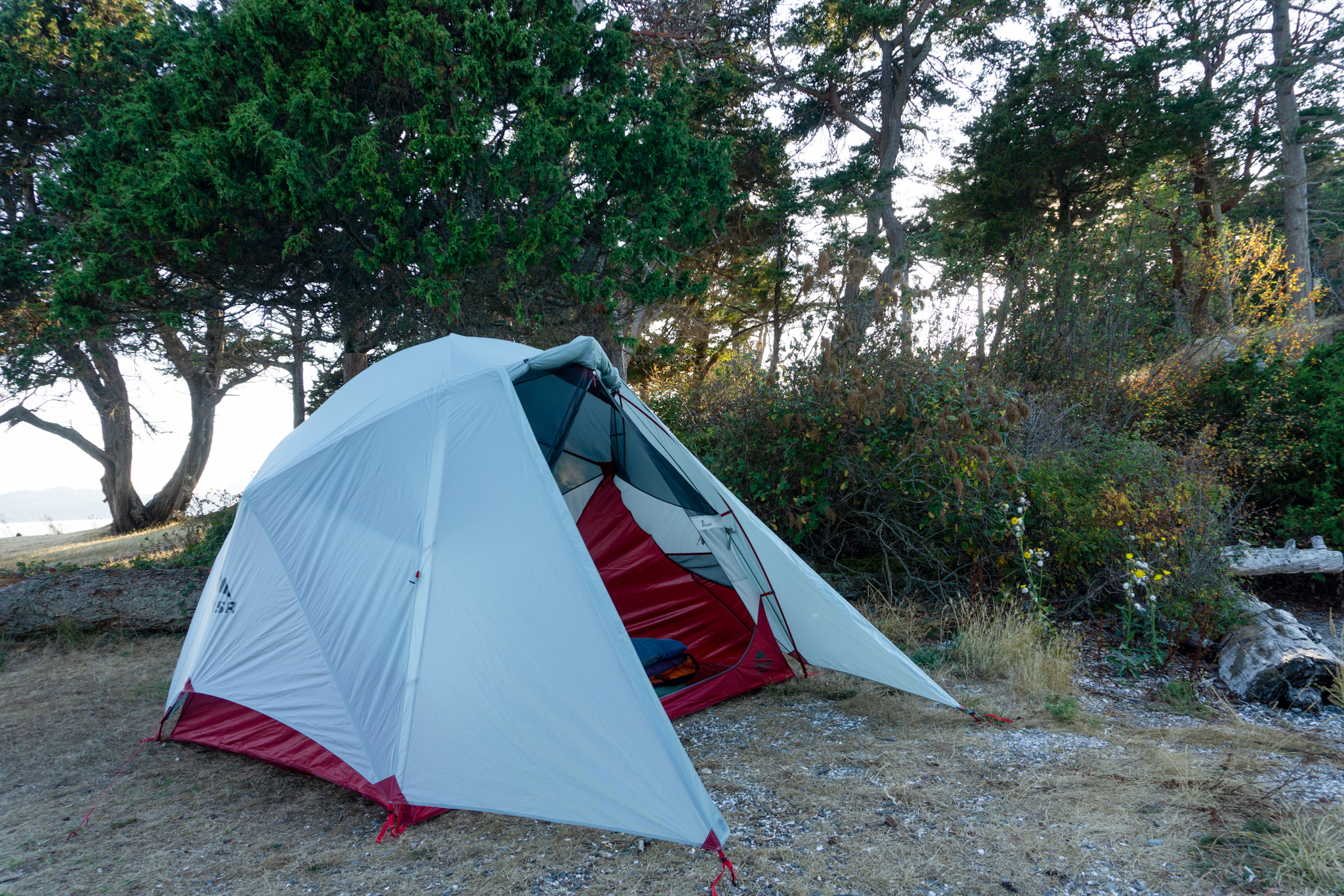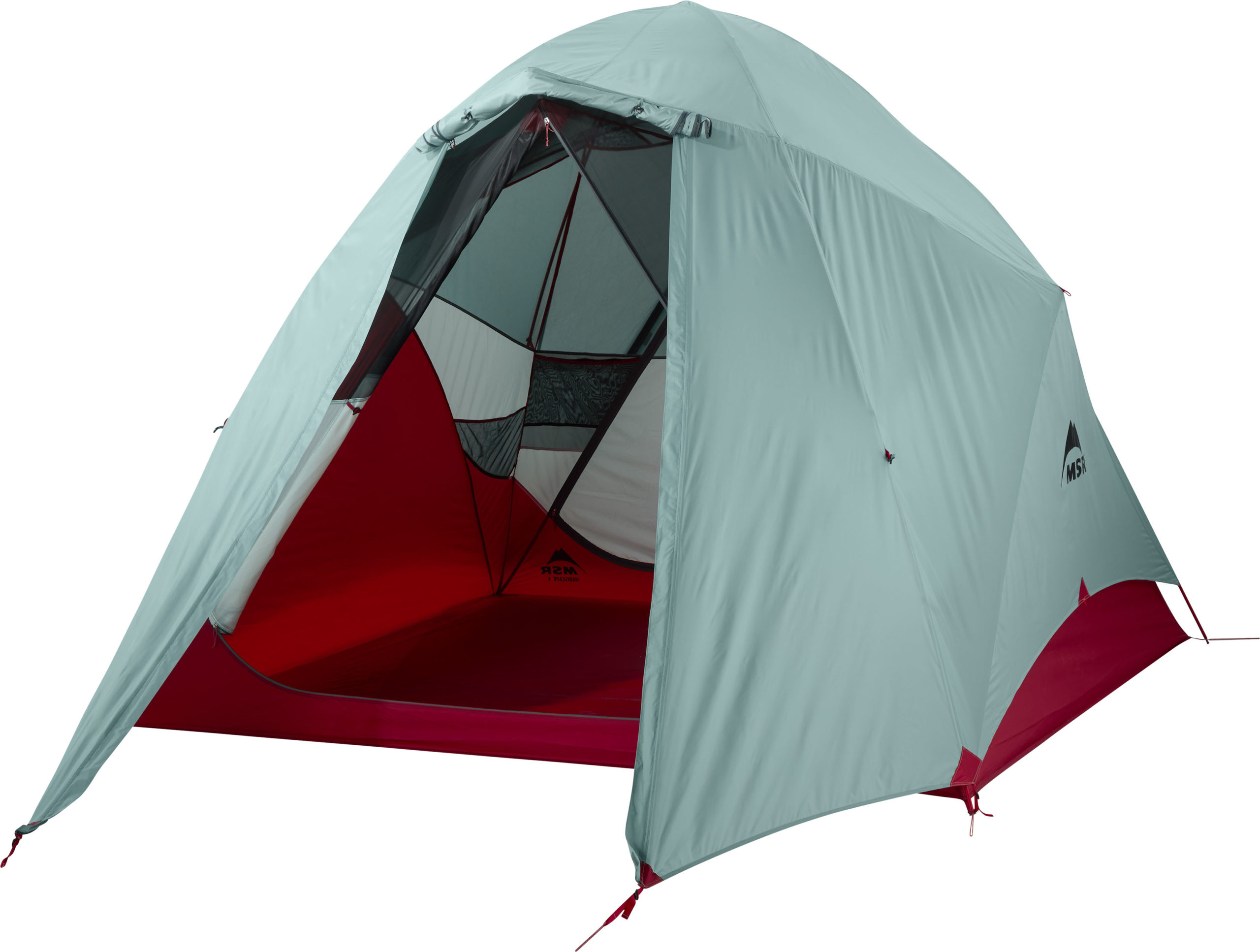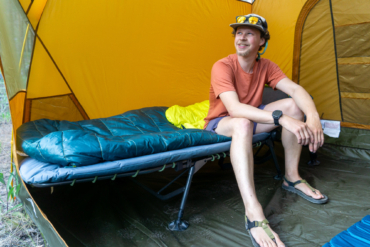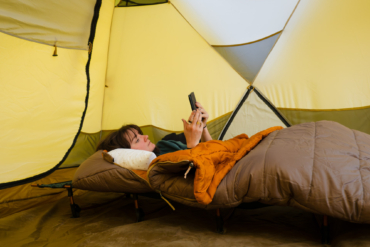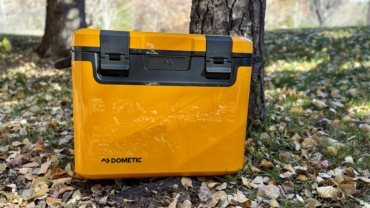Compared to backpacking tents, setting up front-country-style tents can be a bit like wrestling a nylon pig. Add a bit of wind and some excited rugrats? Forget about it. And while there’s a lot to love about the classic MSR Habitude, which has been highly ranked in our Best of Camping Tents multiple years running, there are a few things I inevitably fumbled with on that tent.
Thankfully, the new MSR Habiscape line salves them all by adding a second door, increased pocketing, and a simplified pole design that does away with many of the finicky pole hubs that can perplex little hands. And not to mention, all at a cheaper price.
This past spring, I took the MSR Habiscape out on a boat camping trip to Washington’s San Juan Islands, where I aimed to test its mettle and ease of use. Here’s what I love about this new tent so far.
In short: The MSR Habiscape tent is tuned for easy setup — even single-handed — and features a bevy of features that elevate this front-country shelter to the top of the heap for families or groups looking for an all-in-one option.
- Floor Area: 62.5 sq. ft. (95" x 95")
- Weight: 12 lbs., 11 oz.
- Height: 73"
- Footprint Included: No
- Number of Doors: 2
- Carry Size: 24" x 9" x 9"
- Seasons: 3-season
- Best For: Camping with tykes with wandering hands
Pros
- Front and rear access doors
- Easy to assemble, even solo
- Generous vestibule space
Cons
- Not as weather-resistant
- Weak tent stakes
MSR Habiscape Tent Review
The Setup
Straight out of the gate, the Habiscape is a breeze. Rolling the tent out of its rope-bag-styled stuff sack was simple. I honestly wish the rest of the tent scene would pick up on this style of stuff sack versus the standard tube of fabric. No cramming/un-cramming here.
From there, the setup was a no-instructions-needed affair. There is a single hubbed pole set spreading the four corners of the tent. Four additional short poles bring out the four walls to near vertical. There are no fussy pole sleeves here. Instead, there are only quick-to-snap clips that make solo set-up feasible. That’s no small feat in a tent this large.
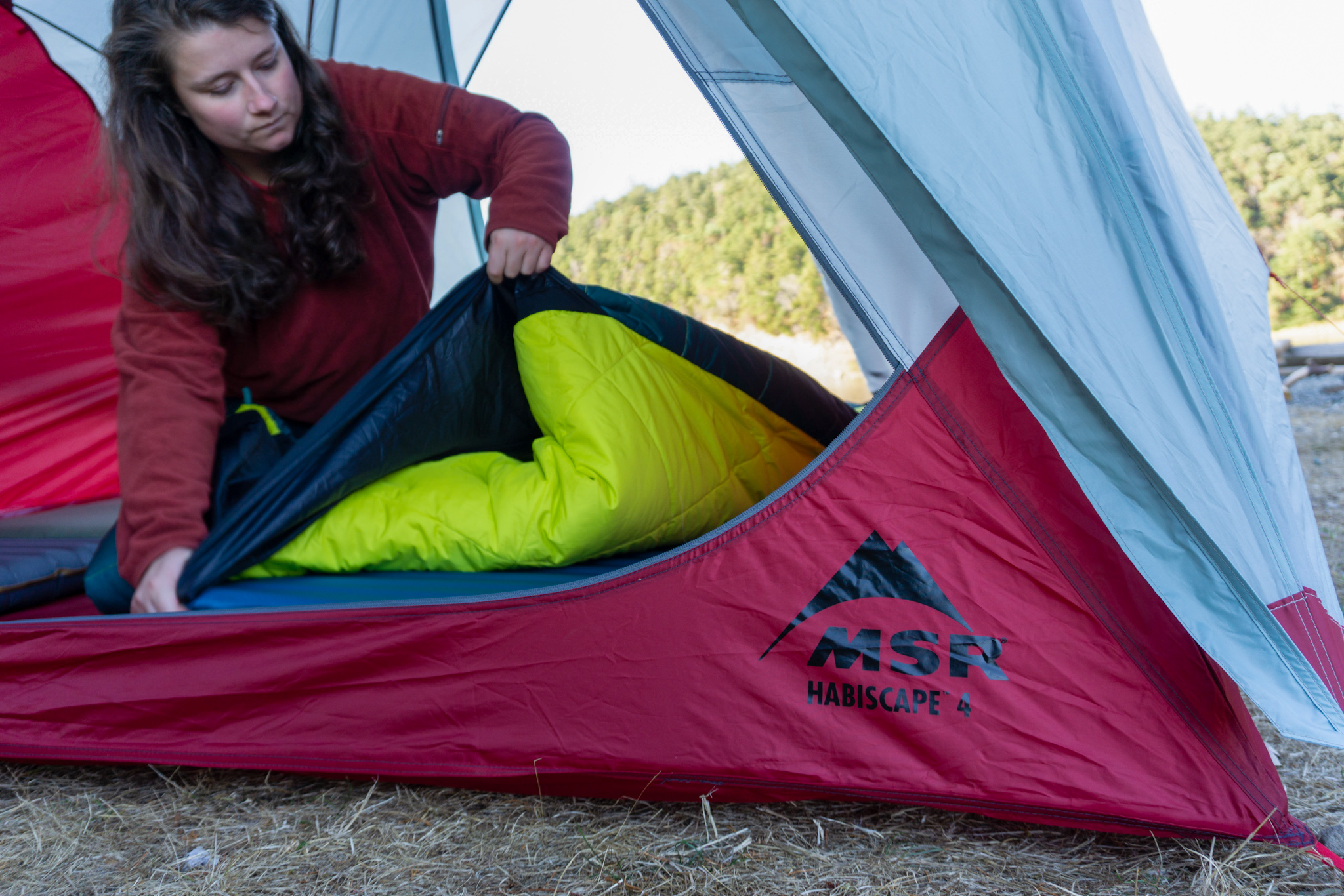
Draping the rainfly follows the same trend. While there are ample opportunities to do otherwise, this tent only requires two tent stakes to pull out the front vestibule. The vestibule itself is a generous space to store your kit, and it can even be extended out to provide cabana-like coverage while camping.
And if you needed more room, MSR also rolled out the Habiscape Lounge ($600-700) this year. It bumps up the vestibule space and brings the area up to 36 square feet in the four-person version — easily enough to store a cooler. Or, just kick back under the cover on a camp chair.
Unfortunately, even though I scoured the bag, no footprint comes along with this tent. That’s a bit of a bummer. While I typically eschew a ground cover for backpacking, they can be key in making a clean getaway during car camping. The only thing worse than loading up a soggy tent is a muddy, soggy tent.
Ease of Use and Livability
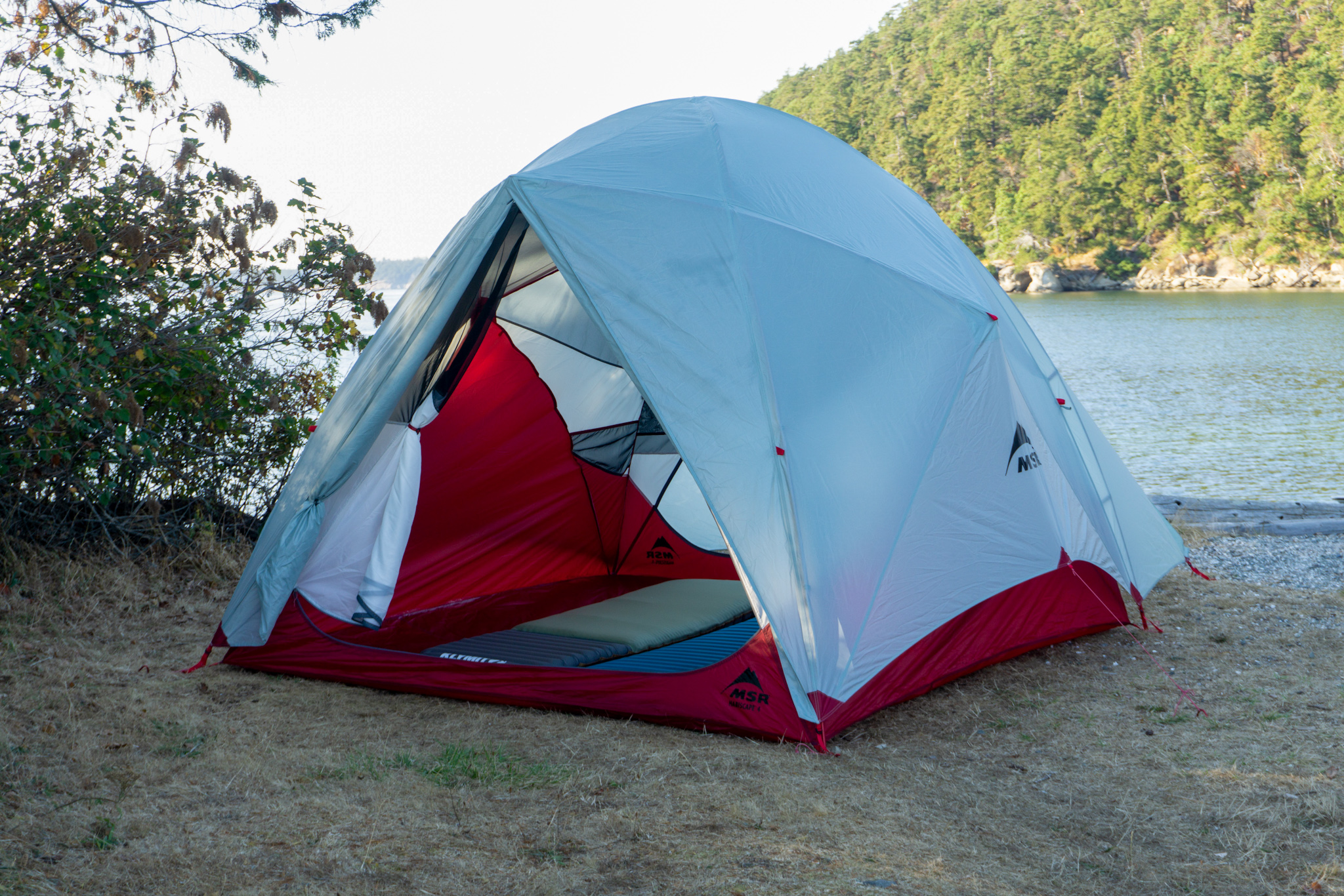
Here’s where the Habiscape really impressed us — 10 total pockets stud the interior, placed at high and low stations to ensure that everyone has a stash spot. That also ensures that essentials like car keys are out of reach for wandering hands.
The internal structure of the tent body is tensioned sufficiently to support almost anything you could load up into the pockets, which is something we’ve suffered through on less-able camping tents.

On top of that, MSR added a novel new pocket known as the Pass-Thru pocket to the front of the tent. It’s accessible from both inside and outside, which I found to be ideal for items like a headlamp. We’ll also note that the storage sack does double duty as a hanging interior storage bag. Though, I found its functionality to be minimal.
The near-vertical walls mean that even camping cots are fair game inside the tent. And the 95″ x 95″ floor plan accommodates any mattress, even the long and wide varieties. For two, it was a palatial space for an overnight.
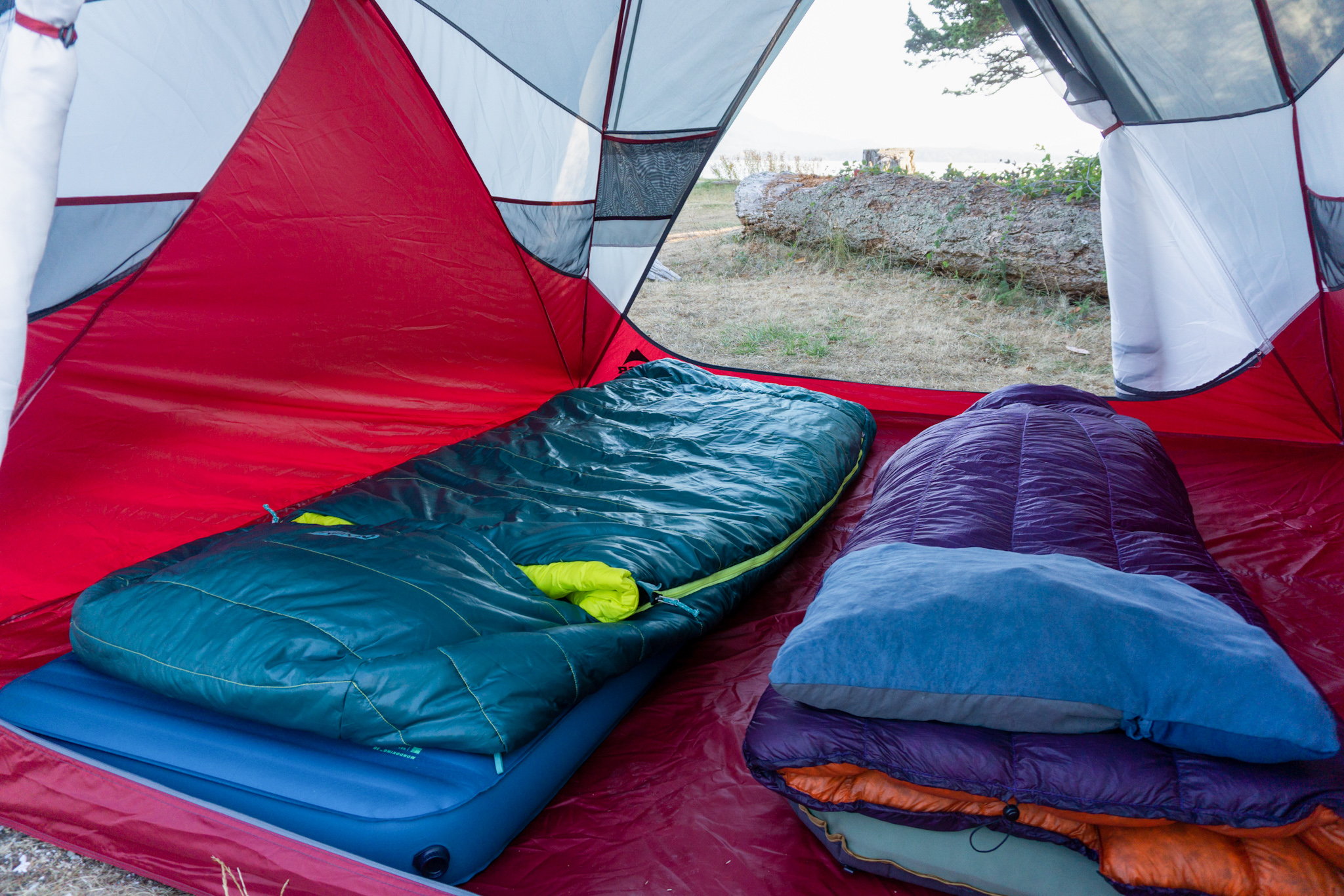
Onto the star of the show: the second door. In previous testing of the Habitude series of tents, the lack of an additional door was an issue for some testers. No longer! With a full-size aperture at the rear, entering and exiting the tent without jostling your co-campers is a breeze.
Packing away the tent is a simple affair, though I did note a particular longing for the buckle-end rainfly connections that some other tents sport. The fly on the Habiscape slots onto the end of the main pole structure with aluminum tabs. While it’s a solid connection, it lacks the satisfying snap and ease of releasing the fly from the tent body.
Put away, the tent compresses down into a 24″ x 12″ cylinder and easily disappears into the trunk of your car (or the bow of your boat).
Weather Resistance

Thankfully, our evening abroad didn’t include one of Washington’s famous spring Pacific storms. But from the construction of the Habiscape, I was able to glean a few things.
Compared to the Habitude, the secondary poles of the Habiscape only reach mid-panel. I imagine that will provide a little less wind resistance. There’s also notably more mesh in the inner of the new design. Both of these combined means that there will be considerably more ventilation in the Habiscape. But that comes at the trade-off of overall weatherproofing.
That certainly doesn’t mean that the tent can’t hang — just that it’s a bit more styled for fair-weather excursions. I will note that during actual weather, while the rear door is well protected by the fly, it doesn’t have much overhang — meaning you’ll want to use the front door only.
The fabrics used in the Habiscape are all top-notch as well, with a 68D polyester canopy overhead, a floor of the same denier, and a DWR finish on both to ensure that soaking rain will bead off. There are no flat areas of the canopy, either, so there’s nowhere for rain to pool on those especially nasty nights.
MSR Habiscape: Conclusion
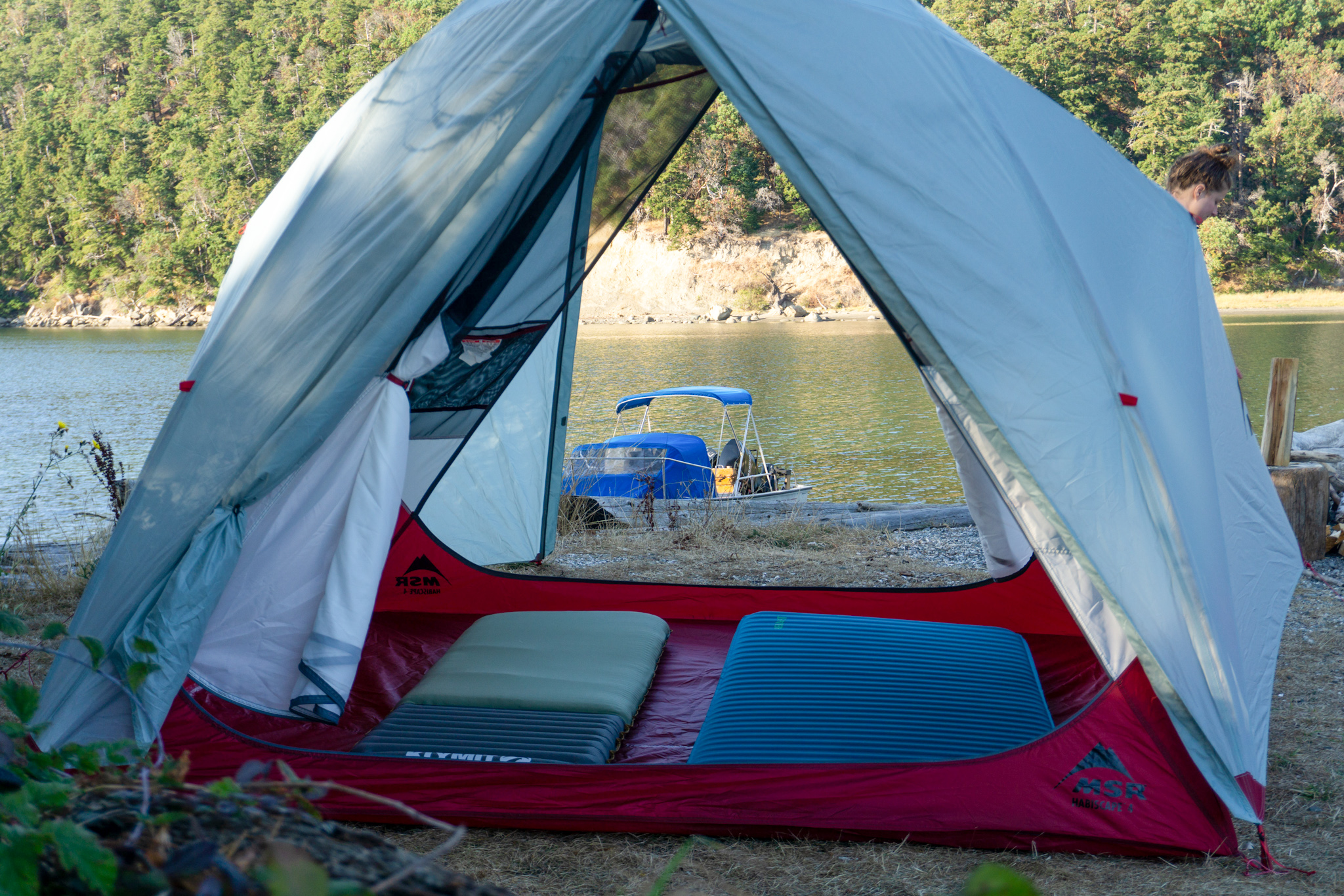
While the Habitude was already a great camping tent, I dig the direction MSR decided to take the new Habiscape. And, if you’re willing to trade some slight weather protection, you’ll get a tent that maintains the same square footage and weight, and that sells for $100 cheaper across the board.
Compared to many of the top camping tents on the market currently, like the REI Basecamp 6, or The North Face Wawona 4, the Habiscape comes in as a tough competitor. The $500 price tag is a bit on the high end, but for the price, you get a tent that’ll stand up well to the test of time (and tykes).
